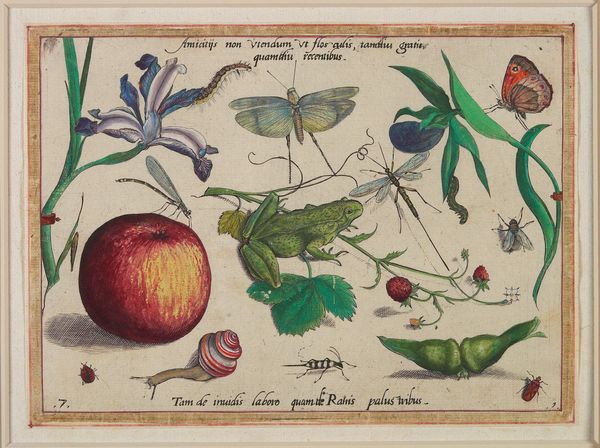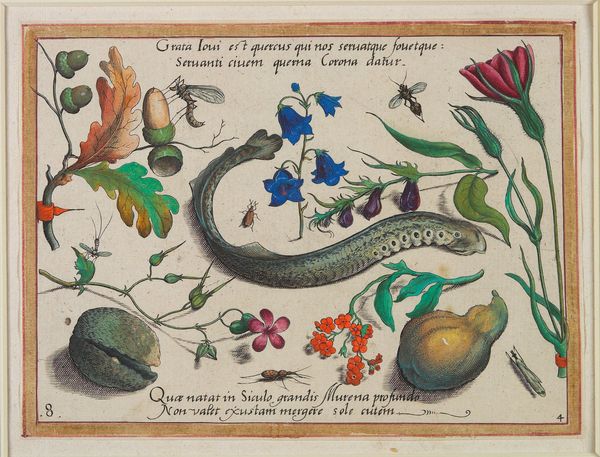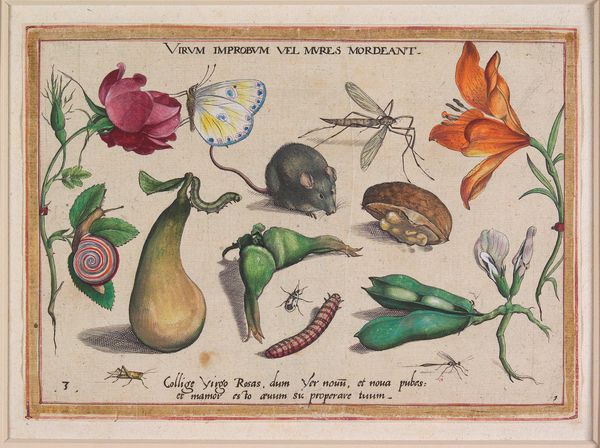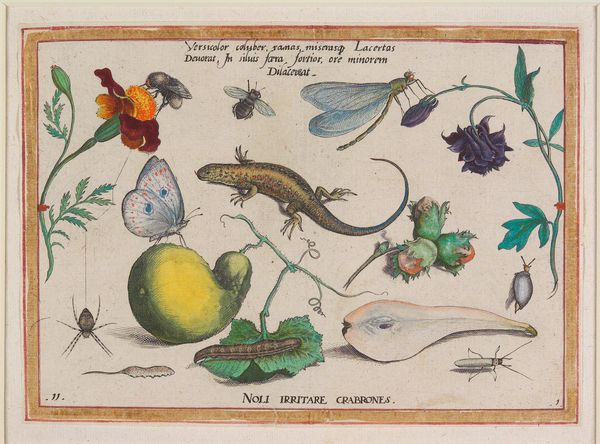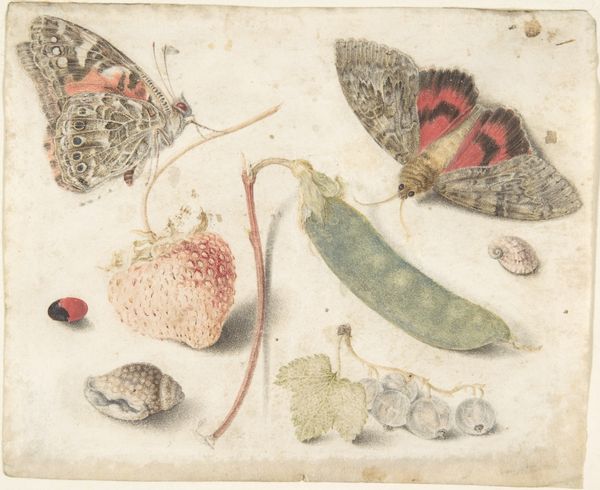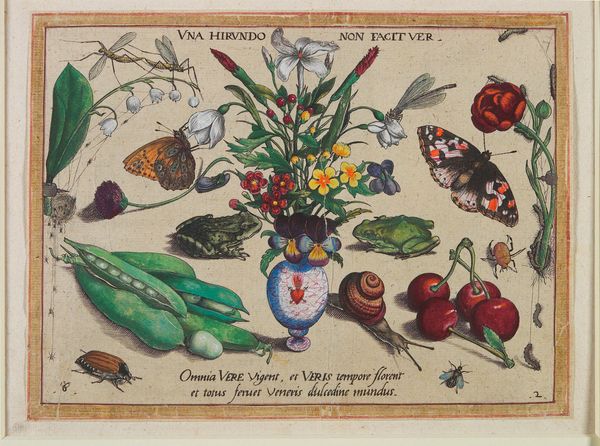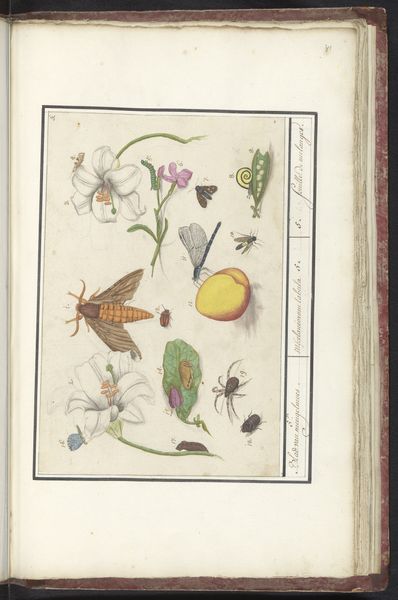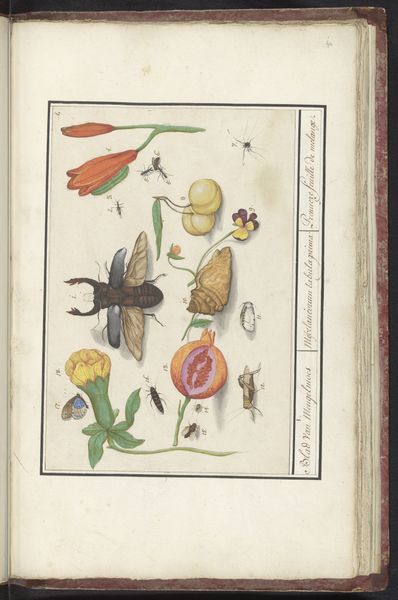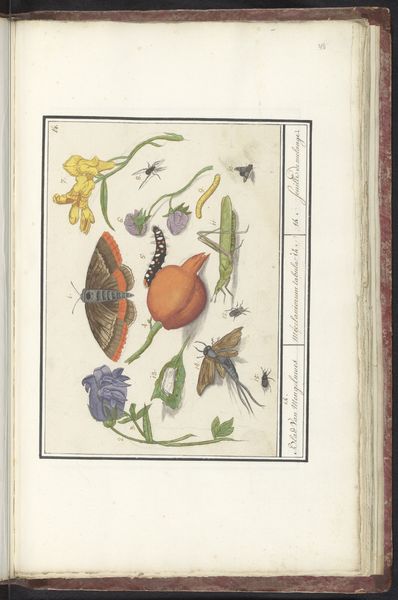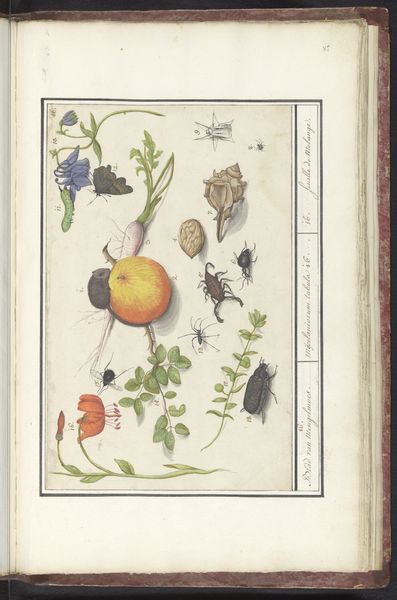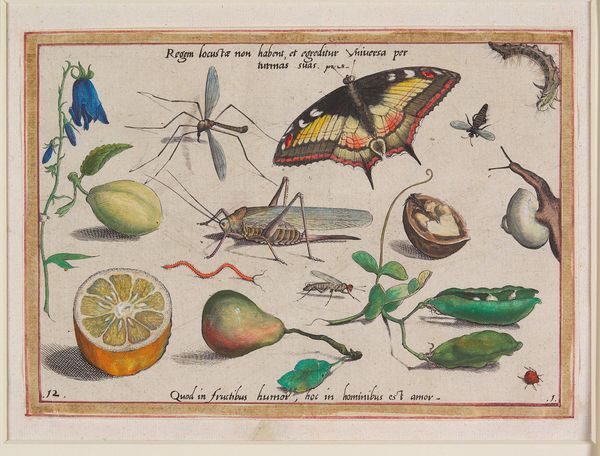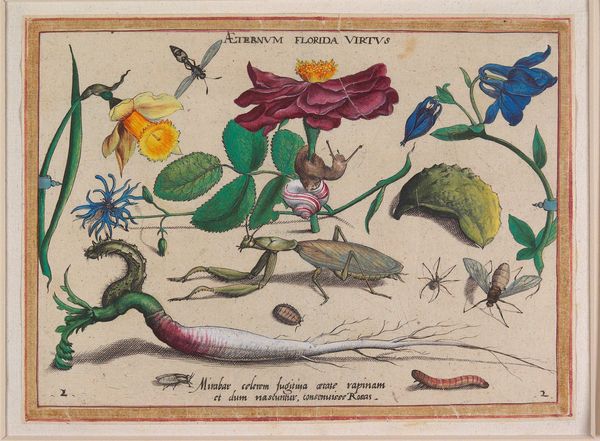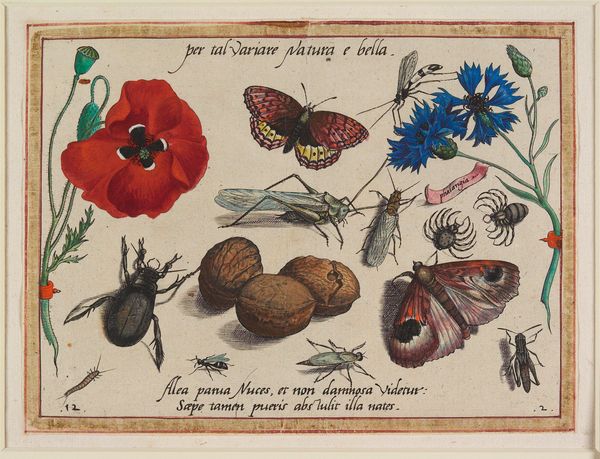
Dedit mihi Dominus Artem mercedem meam Et in illa laudabo nomen eius 1592
0:00
0:00
coloured-pencil, print, watercolor
#
coloured-pencil
#
water colours
# print
#
mannerism
#
watercolor
#
coloured pencil
#
northern-renaissance
#
botanical art
#
miniature
Dimensions: 6 3/8 x 8 5/8 in. (16.19 x 21.91 cm) (plate)
Copyright: Public Domain
Curator: Let’s turn our attention to this intricate piece, “Dedit mihi Dominus Artem mercedem meam Et in illa laudabo nomen eius,” created around 1592 by Jacob Hoefnagel. Editor: It has this jewel-like quality – intensely detailed and brimming with life, but with a strangeness too. There’s a curious assortment of flora and fauna populating this miniature world. Curator: Indeed. Hoefnagel was part of a movement embracing scientific illustration, yet also deeply embedded in the Mannerist style and the traditions of the Northern Renaissance. This blending reflected shifting perspectives on man's relationship with nature, from observation to spiritual meaning. Editor: Tell me more about what that relationship was perceived as during this era through symbolic interpretations of Hoefnagel's world? The dragonfly that dominates the piece reminds me of transformation, perhaps reflecting religious themes. What significance might this animal have held during this historical period? Curator: Dragonflies, butterflies, all were common metaphors for spiritual transformation at the time. You see them often flitting across similar artworks. These were, of course, also potent symbols within the existing religious contexts of the 16th Century in the region. They reflect spiritual, social, and cultural concerns of the people during this time. The inclusion of texts such as the opening latin phrase translates into something like "the lord gave me the craft to serve as reward so i can praise him". And also a further quote at the bottom too which includes a phrase which states that “I do not like beans or garlic". Editor: I find the seemingly disparate collection of objects quite fascinating as cultural symbolism. Each insect, fruit, or plant, feels intentionally chosen. The two citrus fruits sitting directly beside the dead arthropod that's slightly turned upwards to be pointed towards it gives a subtle notion of vitality vs death. And just slightly beneath these two, another crustacean turned facing left directly outwards! What are your thoughts on how these individual and carefully observed elements, work as a collective metaphor? Curator: Yes, there’s likely a deliberate juxtaposition at play. By using visual codes from the Renaissance and placing them under new relationships, the artwork reflects its political backdrop by showing how nature as both abundant but also chaotic to humankind in subtle ways. Editor: So, reflecting on it, Hoefnagel’s compilation is not simply a depiction but a meditation on humankind’s existence through art itself? Curator: Precisely. It is an exploration into art, its influence and reflection back on nature itself. A fascinating snapshot of its time.
Comments
No comments
Be the first to comment and join the conversation on the ultimate creative platform.

